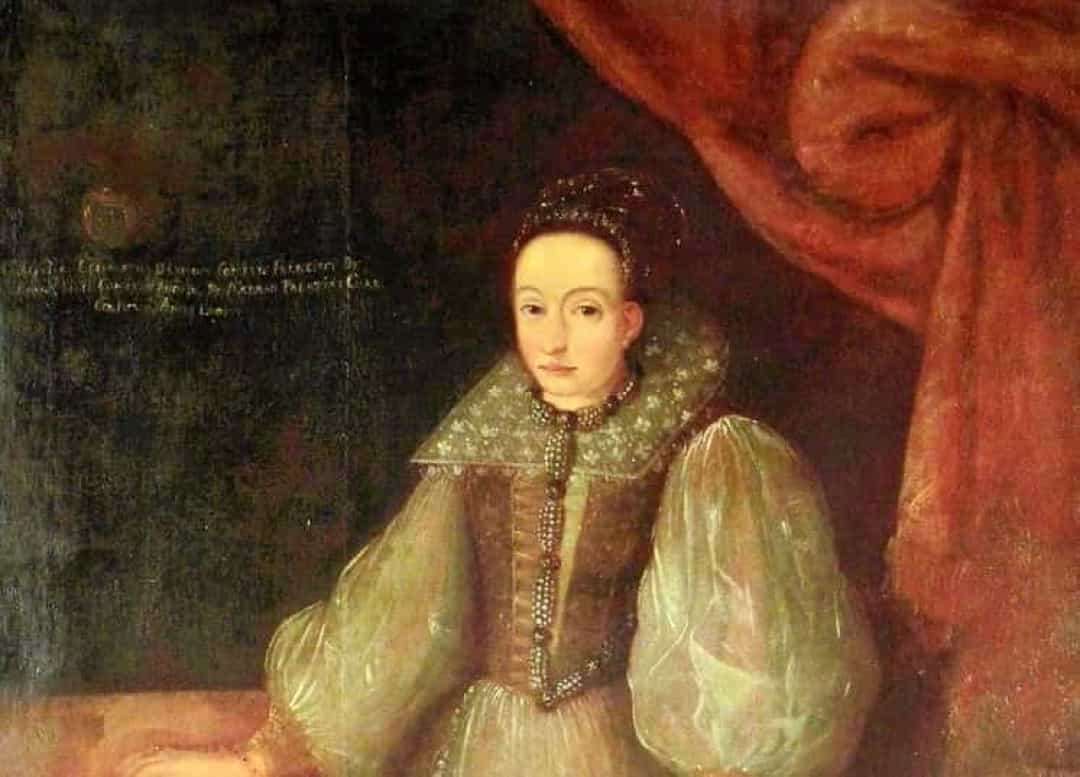Create a free profile to get unlimited access to exclusive videos, sweepstakes, and more!
Countess Elizabeth Báthory and the dark truth behind her killer legend

Few women's crimes have reverberated through history as much as those of Countess Elizabeth Báthory de Ecsed. Even if you are unfamiliar with the name, then chances are you have heard the stories about her legendary sadism. Perhaps you're aware that she holds the dubious honor of being the most prolific female murderer, as dictated by Guinness World Records, or maybe you've heard mention of her as a key influence for a little novel called Dracula. Whatever the case, the story of Countess Báthory is now beyond mythic, a near-fantastical fairy tale that serves as a vessel for every cautionary tale you've ever heard about evil women and their soul-sucking vanities. Báthory was a vampire, a torturer, a creature beyond human who bathed in the blood of innocents to maintain her looks. As is typically the case, the truth behind the story is far more interesting.
Elizabeth Báthory was born on a family estate in Nyírbátor, Royal Hungary in 1560 or 1561, the daughter of Baron George VI Báthory and Baroness Anna Báthory. She descended from multiple noble lineages and included the King of Poland and the prince of Transylvania among her relatives. Said bloodline was also one of generational inbreeding. Her parents were close relations, as was often the case with such marriages. It is thought that this may have been the source of a number of health problems that Elizabeth experienced as a child. She suffered from severe epileptic seizures that led to an array of pseudo-quackery cures that inspired many of the most insidious stories about the Báthory vampire legend.
Because so little about Báthory's childhood can be proven with hard evidence, this is the period of her life where most of the speculation about the origins of her evil is centered. One favorite conspiracy is that her seizures were treated by rubbing the blood of a non-sufferer onto her lips or using a piece of their skull, thus igniting her insatiable bloodthirst. Another theory posited that she was trained by her family to be cruel, taught witchcraft, and exposed to Satanic worship. There's no evidence to support any of this. What we do know is that she was raised in luxury and a level of privilege denied to the vast majority of Hungarian citizens.
At the age of ten, Elizabeth was betrothed to Ferenc Nádasdy, a nobleman and heir to one of the wealthiest dynasties in the region, although he was technically of lower social standing than his wife to be. They married when she was 15 and he was 19, and Ferenc took the surname Báthory. Nádasdy's wedding gift to Báthory was his household, Castle of Csejte, located on the lower end of the Carpathian Mountains. Only a few years after the wedding, Ferenc was promoted to the chief commander of Hungarian troops and sent to war against the Ottoman Empire. Elizabeth was left behind to manage the family estate, defend her husband's affairs, and tend to the local people. Often, her duties included providing medical care and advice to destitute citizens. She also birthed at least five children, although some reports suggest she had another that died during infancy. Ferenc Nádasdy died on 4 January 1604 at the age of 48 after 29 years of marriage to Báthory. By this point in time, allegations of his wife's atrocities had become commonplace across the kingdom.
Between 1602 and 1604, the rumors about Báthory's crimes became impossible for the authorities to ignore. Lutheran minister István Magyari made complaints against her, both publicly and at the court in Vienna, but it took until 1610 for King Matthias II to assign two notaries, András Keresztúry and Mózes Cziráky, to collect evidence on the myriad charges made against her. Hundreds of testimonies were collected and what they revealed stunned the notaries. Girls as young as ten were said to have been abducted by Báthory, beaten severely, and mutilated before freezing or starving to death. Some girls were allegedly burned with hot tongs. Others had parts of their faces bitten off.
The most common motif of the Elizabeth Báthory legend is that she would bathe in the blood of her victims as a way to retain her legendary beauty and youth. It's a striking image and one that has endured longer than the truth of Báthory's life and crimes. It's also probably not true. Indeed, such stories didn't become part of her lore until she'd been dead for over a century. The claim first appeared in print in 1729 in the work of Jesuit scholar László Turóczi. No witness accounts from her trial or testimonies against her make reference to baths of blood. It seems to have been either complete fiction or the storytelling equivalent of a game of telephone, with the trust getting twisted up in hearsay, exaggerations, and religious scaremongering.
On December 30, 1610, Báthory was arrested in her home, along with four of her servants. The trial itself was called into question, even at the time. Many witnesses could not offer first-hand evidence but would insist that they had heard from others about what Báthory had allegedly done. Many servants confessed to heinous crimes of their mistress but only after intense torture sessions. Given her major social status, it was decided that a public trial and execution would have been too scandalous, so instead, she was put on house arrest. She remained at the castle in Csejte for the rest of her life and died in her sleep on August 21, 1614, at the age of 54.
To this day, the case of Elizabeth Báthory inspires rigorous debate and historical examination. Some believe that she was the victim of a politically motivated conspiracy as a means to get control over her land, and others have raised the possibility that she was targeted by the Lutheran Church because of her Calvinist faith. While some of the testimonies given have fallen under scrutiny, it's hard to dispute the hard evidence of numerous bodies of dead and dying girls being found in the castle. For all of the outlandish theories and conspiratorial plotting surrounding Báthory, the truth is probably a simple one: She was a sadistic aristocrat who believed that her privilege sheltered her from punishment. In many ways, it did. She got to die in her own bed with her family at home, after all.
Today, you can find Elizabeth Báthory's legend throughout modern pop culture. She's a favorite character in many vampire novels and is even a primary villain in one of the official Dracula sequels written by Bram Stoker's great-grand-nephew. She's referenced in DC Comics, the Vampire Hunter D manga, American Horror Story, the Tekken games, and many metal songs. There's a devious charm to the myth of Báthory, a wicked temptress more akin to a Disney villain than a real noblewoman. It's yet another way that history softens the truth because, simply, the real thing is too horrific to consider.


























